Japanese Festivals & Holidays
The major holidays in Japan include national holiday, folk festivals, spirit days, and local ceremony. There are 16 legal holidays in Japan, thus each month has 1-2 holidays. The food and festivals highlights the core values in Japanese cultures. With numerous holidays and ceremonies celebrated throughout the year, Japan attracts tourists from all around the world for its diverse entertainments.
Date: January 1-3 (related celebrations take place throughout January)
Other Names: Oshogatsu
Shogatsu refers to the Japanese New Year celebrated in Japan and around the world. Japan new is probably the most important holiday in Japan. The holiday was originally celebrated in the first month of the lunar year. However, the tradition was changed after Meiji Restoration, and people celebrate the holiday according to Western calendar. Shogatsu starts on Jan 1st and last until the last day of the month. The holiday started off as an opportunity in which people pray for plentiful harvest.
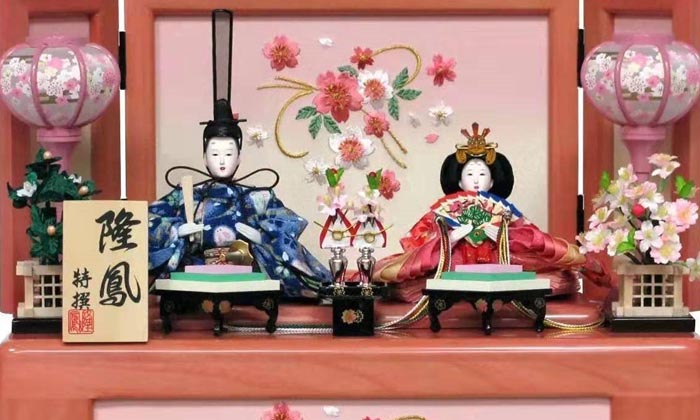
Hina-matsuri: Doll Festival
Date: March 3
Other Names: Sangatsu Sekku (3rd month Festival), Momo Sekku (Peach Festival), Joshi no Sekku (Girls Festival)
During the Doll Festival, parents would pay for good health and happiness for their daughters. It is called the Doll Festival because people would start displaying ceremonial dolls on tiers of shelves a few weeks before the holiday, 3rd March. It is also known as the Girls Festival because adults would hold parties for the young girls.
Hanami
Date: March-May
Other Names: Hanami (flower viewing), Cherry Blossom Festival
Hanami means flowering viewing, a practice introduced from China since the Nara period. As cherry blossom gains popularity in Japan, the term now commonly refers to viewing sakura. Cherry blossom takes place from March to May. During this period, Japanese would gather with friend and family and have picnic under the cherry blossoms.
Japan celebrates the entire season of the cherry blossoms. There are festivals in nearly every region of Japan, and some locations, food is available or a park may be decorated with lanterns. Some locations of cherry blossom festivals include:
Yaedake Cherry Blossom Festival in Okinawa. This festival takes place from late January-mid February
Matsuyama Shiroyama Koen Cherry Blossom Festival in Matsuyama-city, Ehime prefecture. This festival takes place early April. Matsue Jozan Koen Festival in Matsue-city, Shimane. This festival has a feature of illuminating the cherry blossom trees at night. This festival takes place late March-early April. Tsuyama Kakuzan Koen Cherry Blossom Festival in Tsuyama-city, Okayama. Japanese tea ceremonies and music performers are held at these festivals. This festival is held early-mid April. Takato Joshi Koen Cherry Blossom Festival in Takato-machi Ina-city, Nagano prefecture. The trees in this region have pink blossoms. This festival is held early April. Takada Koen Cherry Blossom Festival in Joetsu-city, Niigata prefecture. This festival is held early-mid April. Kitakai Tenshochi Cherry Blossom Festival in Kitakami-city, Iwate. This festival is held mid April-early May. Hirosaki Cherry Blossom Festival held in Hirosaki Koen Hirosaki-city, Aomori prefecture. This festival is held late April-early May.
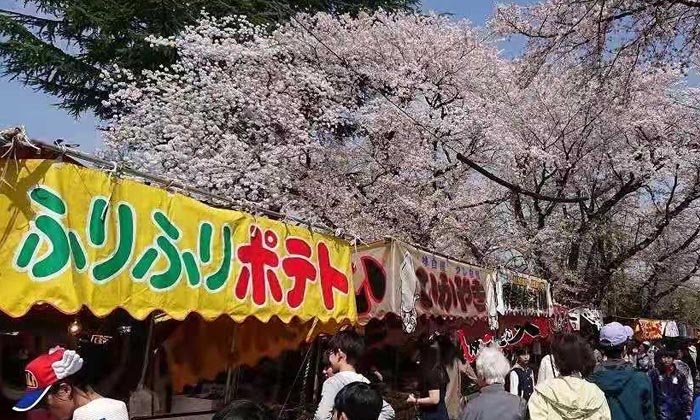
Tanabata
Date: July 7 / August 5-8 (Sendai)
Other Names: The Star Festival
Tanabata is a traditional festival in which girls wish for good skills such as writings and tailoring. During the festival, people would gather together and tie color strips, on which they wrote wishes and poems, on the yard. Corns and pears are commonly prepared on the festival.
Toronagashi: Japanese Floating Lantern Festival
Date: July 19
The Floating Lantern Festival serves to repel the misfortune and prey for good luck. The custom dated back as early as the Kamakura period, and today it is still a very popular festival. During this day, people would gather around rivers, lakes, ponds, and sea and float their lantern on the water.
Bon Festival
Date: August 13-16
Bon Festival is the Ghost Festival in Japan. It is the second most important holiday after the New Year. Business and organizations usually offers a week of vacation day. Many Japanese would return home to visit family during the holiday.
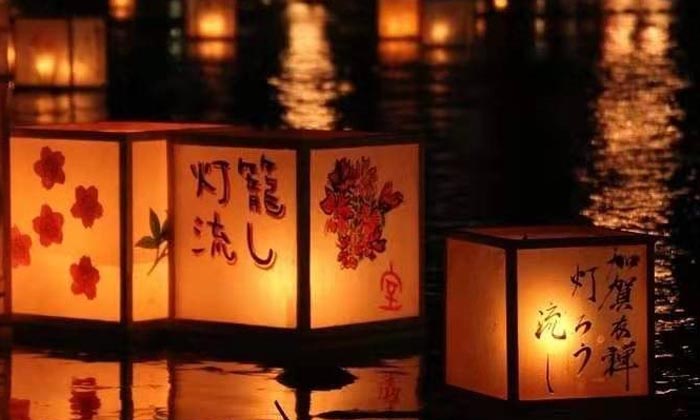
Momijigari
Date: September-November
Similar to Hanami in spring, Momijigari is viewing maple leaves in fall. People usually gather together and enjoy scenic view and celebrate the productive year.
Shichi-go-san: "7-5-3" Festival
Date: November 15
The 7-5-3 Festival is a special holiday in Japan. In Japanese tradition, infants have to pay a visit to a temple in 30-100 days after birth. For any three years old children, five years old boys, and seven years old girls, they have to pray again at a temple on November 15 for good health and growth.
Ōmisoka: New Year's Eve
Date: December 31
Omisoka is celebrated on the last evening of the year. It was originally celebrated according to the lunar calendar, but starting Meiji period, the Western calendar was adopted. Temples hold different New Year's Eve ceremony and activities to eradicate any bad luck, evil, and troubles in the past year.
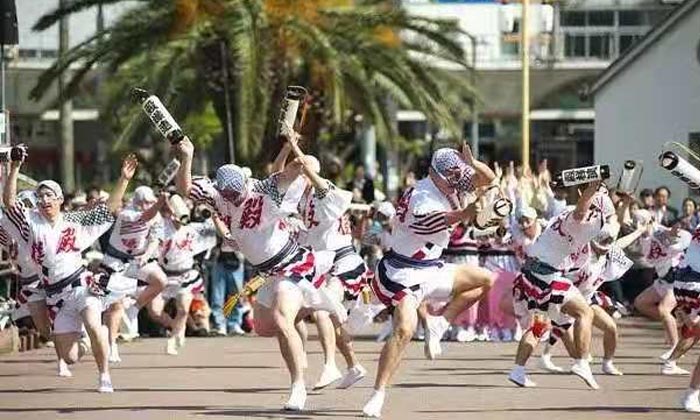
The New Year's Day celebrates the arrival of a new year. Though the legal holiday is only one day, government agency and business usually have New Year vacation from December 29 to January 3.
Seijin Shiki: Coming of Age Day (second Monday of January)
Seijin Shiki is a holiday for the 20 years old young adult. It used to be celebrated on the 15 January on lunar calendar, later was celebrated according to Western calendar. Since the Happy Monday on 2000, the holiday has been changed to the second Monday of January.
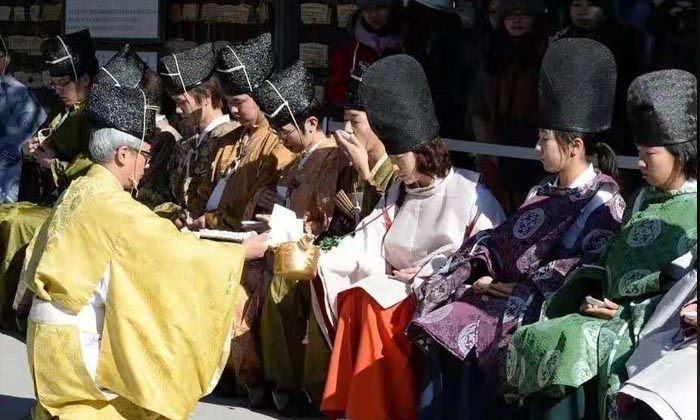
National Foundation Day (February 11)
Japanese celebrate the establishment and foundation of the country on the National Foundation Day. The holiday falls on February 11, the day on which the first Emperor Jimmu became the leader. Ceremonies are held in different temples. It is also a day to promote patriotism.
The Emperor's Birthday (February 23)
The holiday celebrates the birthday of the current emperor. It was also known as the Tenchosetsu before the end of WWII. The date of celebration changes if a new emperor assumes power. The current emperor is Naruhito, the 126th emperor, and his date of birth was 23 Feb 1960.
Vernal Equinox Day (March 20 or 21)
The holiday is used to celebrate the beginning of spring. It is usually either March 20 or March 21.
Showa Day (April 29)
Showa Day is recognized as a national holiday starting 2007. Every year, the holiday is dedicated to commemorate the birthday of the former emperor Hirohito.
Constitution Memorial Day (May 3)
The holiday celebrates the Japanese Constitution published on 3 May 1947. It is also a holiday during the Golden Week. On this day, the National Assembly Hall is open to the public.
Greenery Day (May 4)
The Greenery Day was celebrated on April 29 before 2007 and now is amended to May 4. After the death of Emperor Hirohito on 1989, the Japan government established the Greenery Day on April 29, to commemorate the emperor's affection for natural sciences. The holiday is also intended to foster environmentalism.
Children's Day (May 5)
Children's Day was originally the Boy's Day, during which, dads send wishes to son and sons express gratitude toward dads. However, starting 1948, the government announces the celebration to include girls. Today, it is a holiday for the children and family gathering.
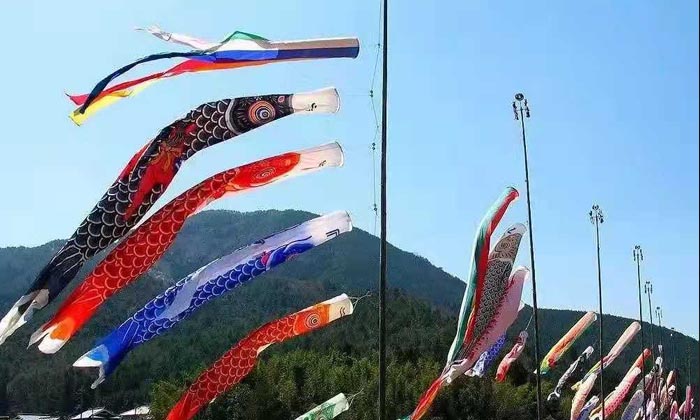
Marine Day (The third Monday of July)
The holiday started in 1941 and became a national holiday since 1996. The holiday is dedicated to appreciate the luck and blessing the ocean brings to Japan, a country surrounded by the sea. Since the Happy Monday in 2003, the holiday is celebrated on the third Monday in July.
Mountain Day (August 11)
A special day celebrates the mountains and their benefits to people.
Respect for the Aged Day (the third Monday of September)
The holiday was first celebrated in 2002, to appreciate the dedication of the elders toward the society and wish for good health.
Southward Equinox Day (22 Sep or 23 Sep)
The holiday usually takes place on 22 Sep or 23 Sep.
Health and Sports Day (the second Monday of October)
The holiday celebrates the 1964 Olympics in Tokyo. It intends to promote exercise and good health practice in the country.
Culture Day (November 3)
Prior to WWII, the Culture Day intended to celebrate birthday of Emperor Meiji. After the war, the holiday instead is used to promote freedom, peace, and academic advancement.
Labor Thanksgiving Day (November 23)
A holiday dedicated to appreciate hard work, celebrate progress, and express gratitude.
Spirit Days in Japan
Setsubun: Bean-Throwing Festival
division of season (beginning of each of the four seasons) (February 3)
In Japan, the term Setsubun refers to the division of each season, that is, the day before each season starts. However, after the Edo period, it often only refers to the day before the beginning of spring. The specific date of vary from year to year. On the day of the festival, there are many traditional activities, such as sprinkle beans, eat ehomaki, etc. There are also some festivals in temples and shrines.
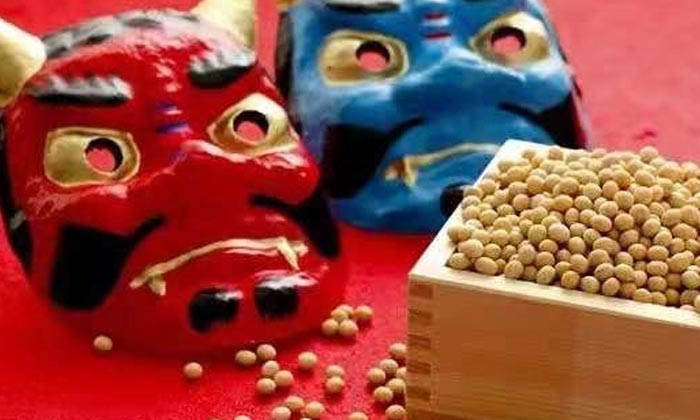
Ennichi: Holy Day
temple fair (holidays related to Kami and/or Buddha)
The Holy Day is a special day when human connect with Buddha, and it is one of the oldest tradition in Japan. Japanese believe it is the most auspicious day to pray for Buddha. As the visitors to the temple increase, many food stands and stores start to show. Today, the holiday is celebrated less for religious purpose. Instead, it becomes more of a carnival in which people have fun at the food stands and shops.
Local Ceremony (matsuri) in Japan
Tokyo:
Kanda held at Kanda Myojin shrine in May
Sanja held at Asakusa Shrine in May
Sanno held at Hie Shrine in June
Kyoto:
Aoi held at Shimogamo Shrine and Kamigamo Shrine in May
Gion held in July
Jidai held on October 22
Nara: Wakakusa Yamayaki held at Nara in fourth Saturday of January
Osaka: Tenjin held at Osaka Tenman-gu in July
Nagoya: Atsuta held at Atsuta Shrine in June
Himeji: Nada no Kenka held at Matsubara Hachiman Shrine in October 14-15
Fukuoka: Hakata Gion Yamakasa held at Kushida-jinja in July
Akita: Kanto held on August 3-7
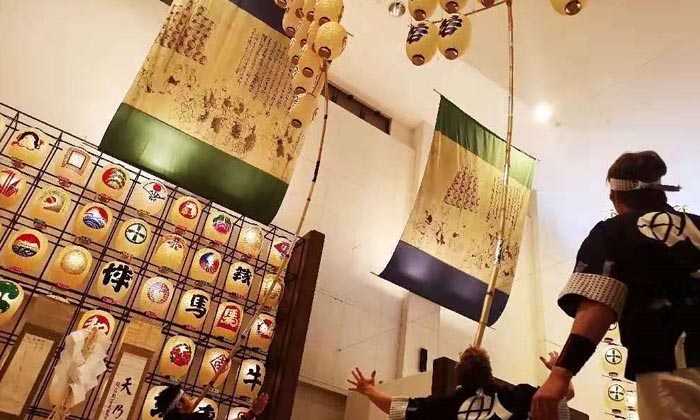
Okayama: Hadaka held in February
Sapporo: Sapporo Snow Festival (the date varies from year to year, usually from late January to early February)
Chitose: Lake Shikotsu Ice Festival held in January
Yasumiya: Lake Towada Snow Festival held in the beginning of February
Aomori: Aomori Nebuta Festival held from about August 2-7 every year.
Nango: Nango Summer Jazz Festival. This event is held every year. Thousands of artists from all over Tohoku and even further regions come to Nango to perform. This is the largest open-air jazz concert held in Tohoku region.
As a reliable Japan travel agency, we are happy to provide you budget Japan group tours, and private car/limousine service, if you need more information on Tokyo tours, and Tokyo limousine service, please feel free to contact our specialists.
The major holidays in Japan include national holiday, folk festivals, spirit days, and local ceremony. There are 16 legal holidays in Japan, thus each month has 1-2 holidays. The food and festivals highlights the core values in Japanese cultures. With numerous holidays and ceremonies celebrated throughout the year, Japan attracts tourists from all around the world for its diverse entertainments.
Japanese Cultural Festival
Shogatsu: New YearDate: January 1-3 (related celebrations take place throughout January)
Other Names: Oshogatsu
Shogatsu refers to the Japanese New Year celebrated in Japan and around the world. Japan new is probably the most important holiday in Japan. The holiday was originally celebrated in the first month of the lunar year. However, the tradition was changed after Meiji Restoration, and people celebrate the holiday according to Western calendar. Shogatsu starts on Jan 1st and last until the last day of the month. The holiday started off as an opportunity in which people pray for plentiful harvest.

Hina-matsuri: Doll Festival
Date: March 3
Other Names: Sangatsu Sekku (3rd month Festival), Momo Sekku (Peach Festival), Joshi no Sekku (Girls Festival)
During the Doll Festival, parents would pay for good health and happiness for their daughters. It is called the Doll Festival because people would start displaying ceremonial dolls on tiers of shelves a few weeks before the holiday, 3rd March. It is also known as the Girls Festival because adults would hold parties for the young girls.
Hanami
Date: March-May
Other Names: Hanami (flower viewing), Cherry Blossom Festival
Hanami means flowering viewing, a practice introduced from China since the Nara period. As cherry blossom gains popularity in Japan, the term now commonly refers to viewing sakura. Cherry blossom takes place from March to May. During this period, Japanese would gather with friend and family and have picnic under the cherry blossoms.
Japan celebrates the entire season of the cherry blossoms. There are festivals in nearly every region of Japan, and some locations, food is available or a park may be decorated with lanterns. Some locations of cherry blossom festivals include:
Yaedake Cherry Blossom Festival in Okinawa. This festival takes place from late January-mid February
Matsuyama Shiroyama Koen Cherry Blossom Festival in Matsuyama-city, Ehime prefecture. This festival takes place early April. Matsue Jozan Koen Festival in Matsue-city, Shimane. This festival has a feature of illuminating the cherry blossom trees at night. This festival takes place late March-early April. Tsuyama Kakuzan Koen Cherry Blossom Festival in Tsuyama-city, Okayama. Japanese tea ceremonies and music performers are held at these festivals. This festival is held early-mid April. Takato Joshi Koen Cherry Blossom Festival in Takato-machi Ina-city, Nagano prefecture. The trees in this region have pink blossoms. This festival is held early April. Takada Koen Cherry Blossom Festival in Joetsu-city, Niigata prefecture. This festival is held early-mid April. Kitakai Tenshochi Cherry Blossom Festival in Kitakami-city, Iwate. This festival is held mid April-early May. Hirosaki Cherry Blossom Festival held in Hirosaki Koen Hirosaki-city, Aomori prefecture. This festival is held late April-early May.

Tanabata
Date: July 7 / August 5-8 (Sendai)
Other Names: The Star Festival
Tanabata is a traditional festival in which girls wish for good skills such as writings and tailoring. During the festival, people would gather together and tie color strips, on which they wrote wishes and poems, on the yard. Corns and pears are commonly prepared on the festival.
Toronagashi: Japanese Floating Lantern Festival
Date: July 19
The Floating Lantern Festival serves to repel the misfortune and prey for good luck. The custom dated back as early as the Kamakura period, and today it is still a very popular festival. During this day, people would gather around rivers, lakes, ponds, and sea and float their lantern on the water.
Bon Festival
Date: August 13-16
Bon Festival is the Ghost Festival in Japan. It is the second most important holiday after the New Year. Business and organizations usually offers a week of vacation day. Many Japanese would return home to visit family during the holiday.

Momijigari
Date: September-November
Similar to Hanami in spring, Momijigari is viewing maple leaves in fall. People usually gather together and enjoy scenic view and celebrate the productive year.
Shichi-go-san: "7-5-3" Festival
Date: November 15
The 7-5-3 Festival is a special holiday in Japan. In Japanese tradition, infants have to pay a visit to a temple in 30-100 days after birth. For any three years old children, five years old boys, and seven years old girls, they have to pray again at a temple on November 15 for good health and growth.
Ōmisoka: New Year's Eve
Date: December 31
Omisoka is celebrated on the last evening of the year. It was originally celebrated according to the lunar calendar, but starting Meiji period, the Western calendar was adopted. Temples hold different New Year's Eve ceremony and activities to eradicate any bad luck, evil, and troubles in the past year.

National Holidays in Japan
New Year's Day (January 1st)The New Year's Day celebrates the arrival of a new year. Though the legal holiday is only one day, government agency and business usually have New Year vacation from December 29 to January 3.
Seijin Shiki: Coming of Age Day (second Monday of January)
Seijin Shiki is a holiday for the 20 years old young adult. It used to be celebrated on the 15 January on lunar calendar, later was celebrated according to Western calendar. Since the Happy Monday on 2000, the holiday has been changed to the second Monday of January.

National Foundation Day (February 11)
Japanese celebrate the establishment and foundation of the country on the National Foundation Day. The holiday falls on February 11, the day on which the first Emperor Jimmu became the leader. Ceremonies are held in different temples. It is also a day to promote patriotism.
The Emperor's Birthday (February 23)
The holiday celebrates the birthday of the current emperor. It was also known as the Tenchosetsu before the end of WWII. The date of celebration changes if a new emperor assumes power. The current emperor is Naruhito, the 126th emperor, and his date of birth was 23 Feb 1960.
Vernal Equinox Day (March 20 or 21)
The holiday is used to celebrate the beginning of spring. It is usually either March 20 or March 21.
Showa Day (April 29)
Showa Day is recognized as a national holiday starting 2007. Every year, the holiday is dedicated to commemorate the birthday of the former emperor Hirohito.
Constitution Memorial Day (May 3)
The holiday celebrates the Japanese Constitution published on 3 May 1947. It is also a holiday during the Golden Week. On this day, the National Assembly Hall is open to the public.
Greenery Day (May 4)
The Greenery Day was celebrated on April 29 before 2007 and now is amended to May 4. After the death of Emperor Hirohito on 1989, the Japan government established the Greenery Day on April 29, to commemorate the emperor's affection for natural sciences. The holiday is also intended to foster environmentalism.
Children's Day (May 5)
Children's Day was originally the Boy's Day, during which, dads send wishes to son and sons express gratitude toward dads. However, starting 1948, the government announces the celebration to include girls. Today, it is a holiday for the children and family gathering.

Marine Day (The third Monday of July)
The holiday started in 1941 and became a national holiday since 1996. The holiday is dedicated to appreciate the luck and blessing the ocean brings to Japan, a country surrounded by the sea. Since the Happy Monday in 2003, the holiday is celebrated on the third Monday in July.
Mountain Day (August 11)
A special day celebrates the mountains and their benefits to people.
Respect for the Aged Day (the third Monday of September)
The holiday was first celebrated in 2002, to appreciate the dedication of the elders toward the society and wish for good health.
Southward Equinox Day (22 Sep or 23 Sep)
The holiday usually takes place on 22 Sep or 23 Sep.
Health and Sports Day (the second Monday of October)
The holiday celebrates the 1964 Olympics in Tokyo. It intends to promote exercise and good health practice in the country.
Culture Day (November 3)
Prior to WWII, the Culture Day intended to celebrate birthday of Emperor Meiji. After the war, the holiday instead is used to promote freedom, peace, and academic advancement.
Labor Thanksgiving Day (November 23)
A holiday dedicated to appreciate hard work, celebrate progress, and express gratitude.
Spirit Days in Japan
Setsubun: Bean-Throwing Festival
division of season (beginning of each of the four seasons) (February 3)
In Japan, the term Setsubun refers to the division of each season, that is, the day before each season starts. However, after the Edo period, it often only refers to the day before the beginning of spring. The specific date of vary from year to year. On the day of the festival, there are many traditional activities, such as sprinkle beans, eat ehomaki, etc. There are also some festivals in temples and shrines.

Ennichi: Holy Day
temple fair (holidays related to Kami and/or Buddha)
The Holy Day is a special day when human connect with Buddha, and it is one of the oldest tradition in Japan. Japanese believe it is the most auspicious day to pray for Buddha. As the visitors to the temple increase, many food stands and stores start to show. Today, the holiday is celebrated less for religious purpose. Instead, it becomes more of a carnival in which people have fun at the food stands and shops.
Local Ceremony (matsuri) in Japan
Tokyo:
Kanda held at Kanda Myojin shrine in May
Sanja held at Asakusa Shrine in May
Sanno held at Hie Shrine in June
Kyoto:
Aoi held at Shimogamo Shrine and Kamigamo Shrine in May
Gion held in July
Jidai held on October 22
Nara: Wakakusa Yamayaki held at Nara in fourth Saturday of January
Osaka: Tenjin held at Osaka Tenman-gu in July
Nagoya: Atsuta held at Atsuta Shrine in June
Himeji: Nada no Kenka held at Matsubara Hachiman Shrine in October 14-15
Fukuoka: Hakata Gion Yamakasa held at Kushida-jinja in July
Akita: Kanto held on August 3-7

Okayama: Hadaka held in February
Sapporo: Sapporo Snow Festival (the date varies from year to year, usually from late January to early February)
Chitose: Lake Shikotsu Ice Festival held in January
Yasumiya: Lake Towada Snow Festival held in the beginning of February
Aomori: Aomori Nebuta Festival held from about August 2-7 every year.
Nango: Nango Summer Jazz Festival. This event is held every year. Thousands of artists from all over Tohoku and even further regions come to Nango to perform. This is the largest open-air jazz concert held in Tohoku region.
As a reliable Japan travel agency, we are happy to provide you budget Japan group tours, and private car/limousine service, if you need more information on Tokyo tours, and Tokyo limousine service, please feel free to contact our specialists.
Related Articles You May Like
Most Frequently Asked Questions
-
Are tourist attractions closed on holidays?Most tourist attractions are open on holidays with adjusted hours. For details, you may check on the official websites.
-
Is it a good idea to travel during Japanese holiday?Yes, festivals and ceremonies are usually hosted during holidays. If you are traveling during holiday, you can participate in the events and have a deeper understanding on Japanese culture.
-
When is Japanese New Year Holiday?Japanese New Year Holiday is usually from Dec 21 to Jan 3, and some companies start vacation as early as Dec 28.
-
Are tourist attractions open during Shogatsu (New Year)?Almost all tourist attractions are open during New Year. However, some shopping districts will close early, thus be sure to check the official website.
-
When is Cherry Blossom Festival?Cherry blossom happens at different time depending on the area, and Cherry Blossom Festival is usually from March to May. There are festivals in nearly every region of Japan, and some locations, food is available or a park may be decorated with lanterns.
-
Are stores open during Bon Festival?Bon Festival is the second most important holiday in Japan, after New Year holiday. Many agencies and company offers one week vacation. If you plan to visit sake brewery or other factories, traveling during August is not recommended.
-
Is Kanda Matsuri a national holiday?Kanda Matsuri is not a national holiday, but there are many local matsuri and events during the period. Thus, it is a great time to travel to Japan during Kanda Matsuri.
-
What are some of the most important matsuri in Kyoto?The top three matsuri in Kyoto are Aoi held at Shimogamo Shrine and Kamigamo Shrine in May; Gion held in July; Jidai held on October 22. This is probably the most vibrant period in Kyoto and travelers can often see geisha performance.
Japan Office
- Tel: +81 50-3701-6391
- Email: info@japanholiday.com
- Working Hours: 8am-7pm, (Japan)
USA Office
- Tel: +1-6265617117
- Email: info@japanholiday.com
- Working Hours: 8am-7pm, Pacific Time

